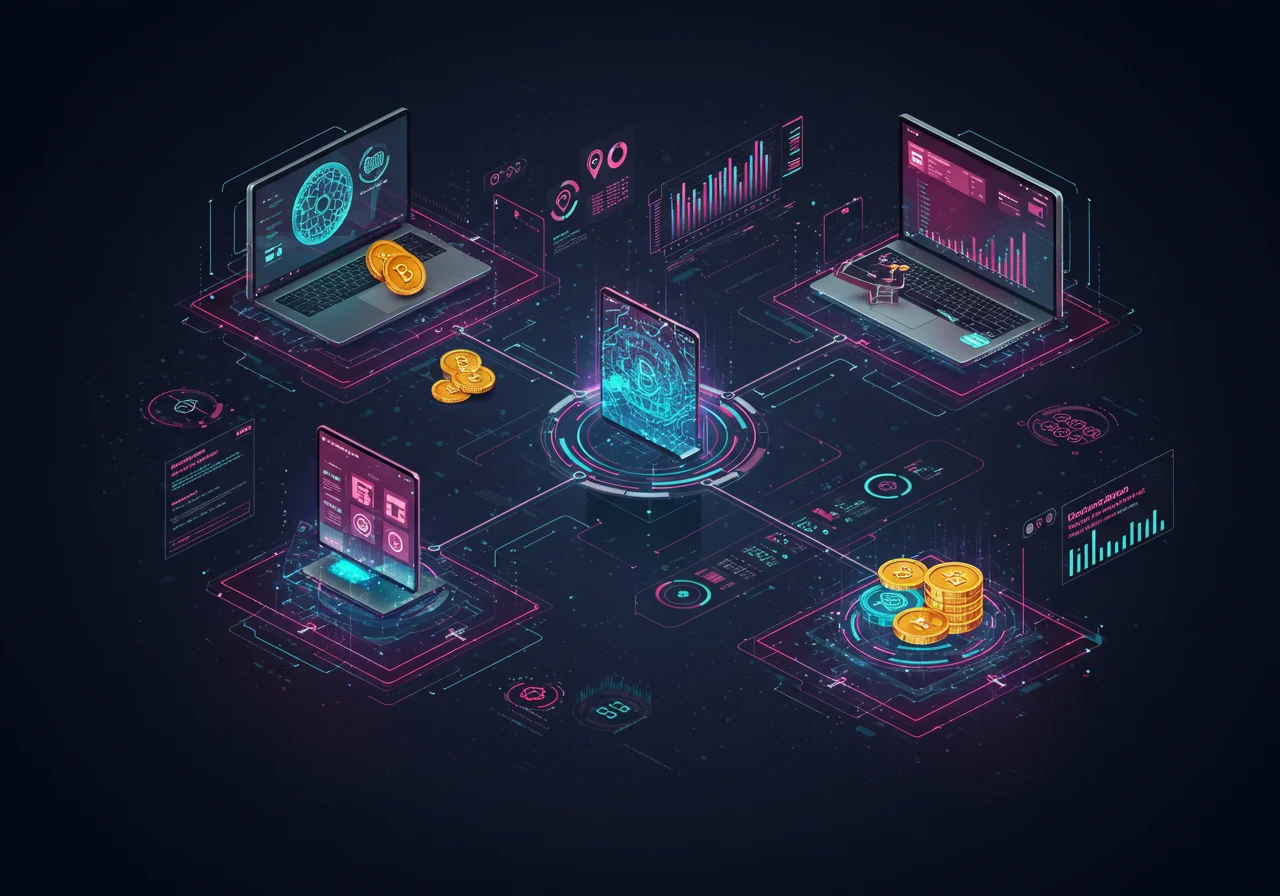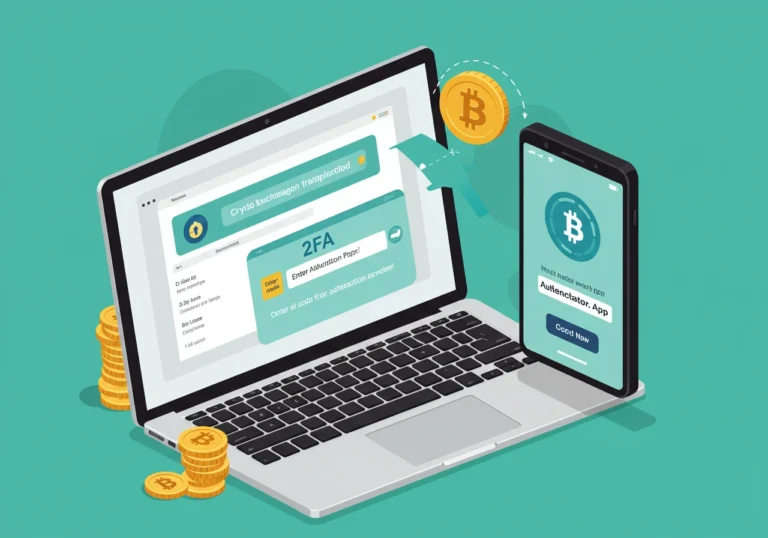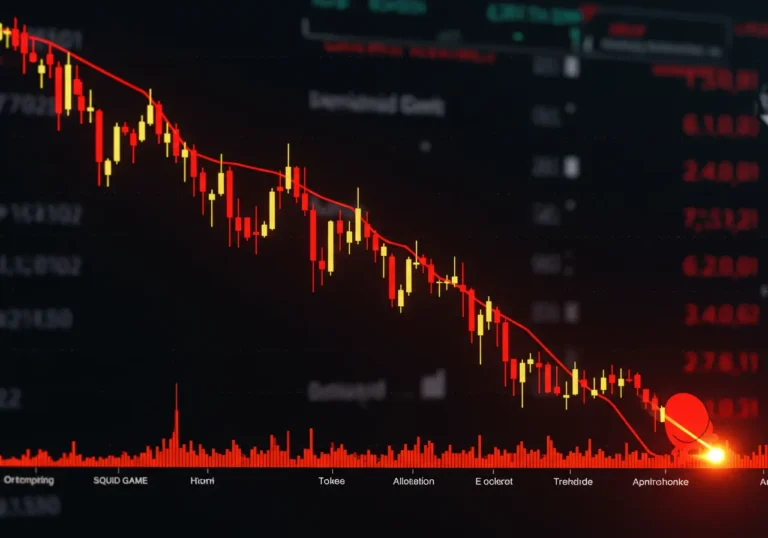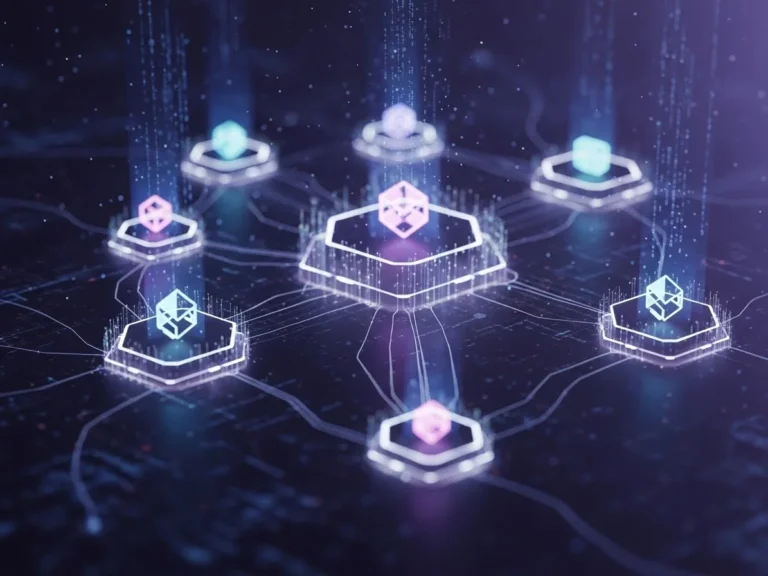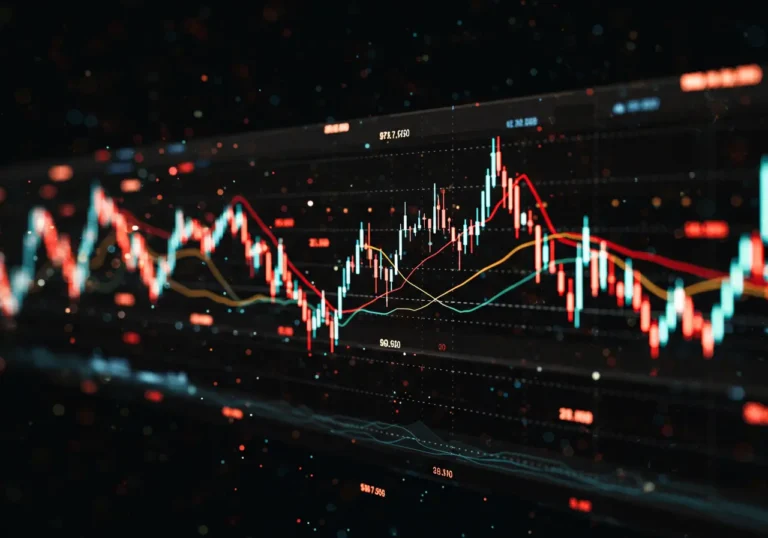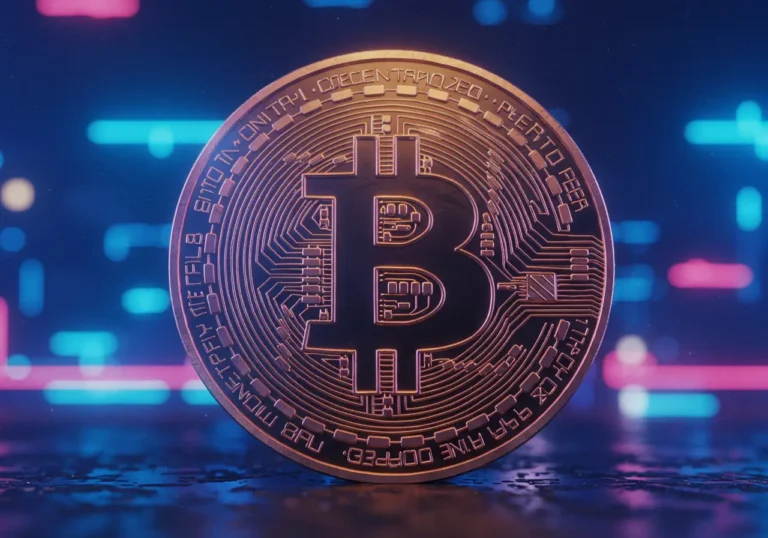What is a dApp? A Simple Explanation
dApp — that’s the short name for a decentralized application. At a simple level, a dApp does something similar to a regular app: it may let you send messages, trade tokens, or play a game. The big difference is where the app’s rules and data live. Instead of one company keeping everything on its servers, a dApp runs on a network of computers. That changes who controls the app, who can change the rules, and how trust works.
What is a decentralized application?
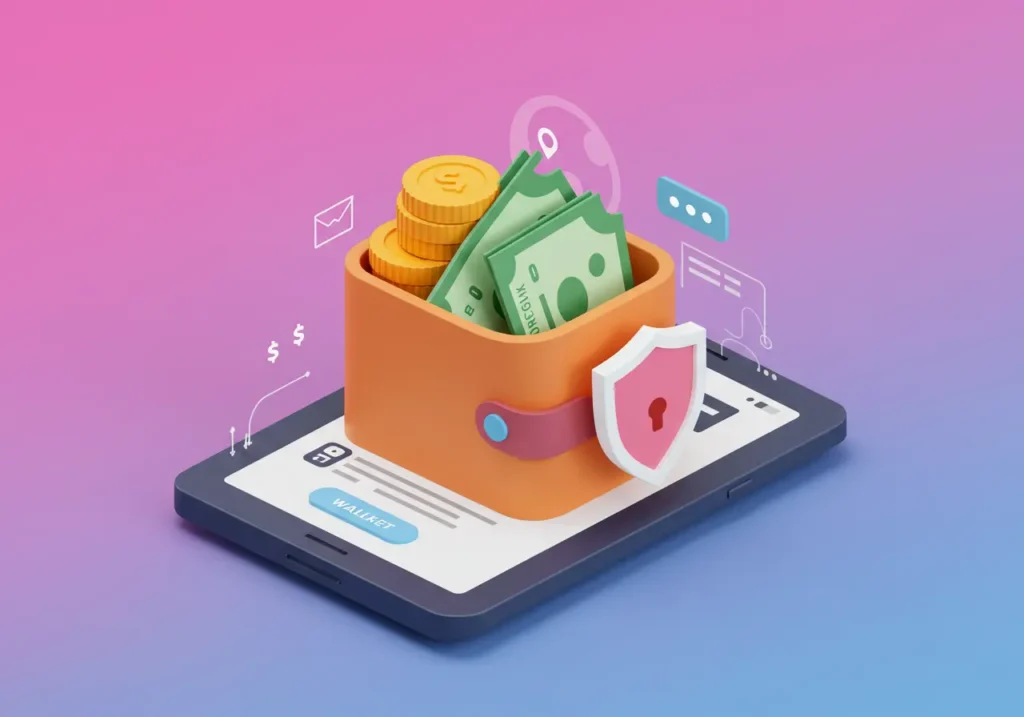
A dApp (decentralized application) is software that runs on a blockchain or a decentralized network. Instead of a single company owning the servers and data, many computers (nodes) share the work. That shared structure provides security and transparency.
Key points of the decentralized application definition:
- The program logic is usually in smart contracts — small programs stored on a blockchain.
- Data and transactions are recorded on a public ledger, making actions visible and verifiable.
- No single party can change the system alone; changes typically require consensus.
Imagine a public bulletin board in a town square where everyone can read notices and no one can erase them without the town agreeing. A dApp aims to put that same kind of shared trust into software.
How do dApps work?
At its core, a dApp combines a user interface (what you see) with smart contracts (the rules) that live on a blockchain.
Here is a simple flow of how dApps work:
- You open the dApp in your browser or mobile app.
- You connect a wallet (a key that proves it’s you).
- When you press a button (like “send” or “swap”), the dApp creates a transaction.
- The transaction is sent to the blockchain where nodes validate and record it.
- Once confirmed, the result is stored on the chain and the dApp updates your view.
Because the rules are in smart contracts, anyone can inspect them. That makes the app more transparent. It also means your actions are public on the ledger, so privacy choices matter.
An everyday example
Think of a dApp for lending books. Instead of a library manager deciding who borrows which book, the rules (who can borrow, for how long, and late fees) are set in a smart contract. If you borrow a book, the contract records it on the ledger. No single librarian can override the rules without the system’s consent.
Characteristics of decentralized applications
Good dApps usually share a few clear traits:
- Open and transparent: The code and transactions are visible to anyone.
- Censorship-resistant: No single actor can shut the app down easily.
- Trustless interactions: Users don’t need to trust a central party; the system enforces the rules.
- Permissionless: Often anyone can use the app without approval.
- Decentralized data storage: Data lives across many nodes rather than on one server.
These characteristics of decentralized applications help explain why some people prefer dApps for finance, identity, or social tools.
Benefits of dApps
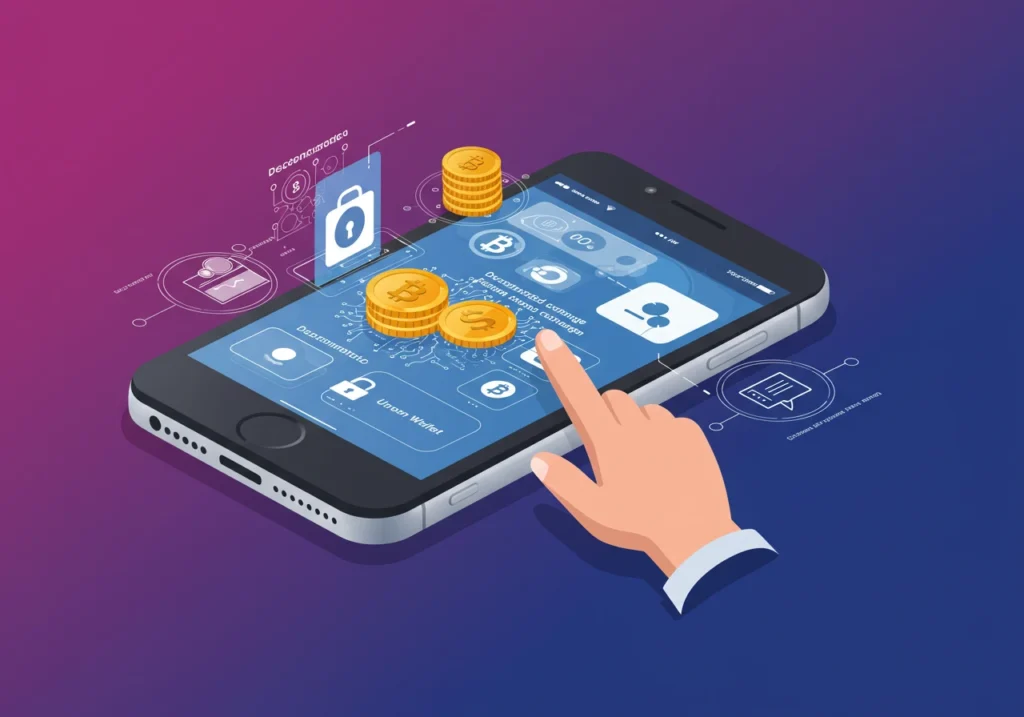
Why build or use a dApp? There are clear advantages:
- Greater user control: Users can hold their own keys and data.
- Transparency: Actions and rules are visible on the blockchain.
- Reduced single-point failure: No single server to hack or shut down.
- Innovation in incentives: Tokens and rewards can be built into the app to encourage helpful behavior.
For example, a content platform can reward creators directly with tokens. That changes the economics and makes the system fairer for creators and users.
Examples of decentralized applications
There are many examples of decentralized applications in the real world. Here are a few simple ones:
- Decentralized exchanges (DEXs): Platforms that let people swap tokens directly, without a middleman.
- Lending dApps: Systems that let users lend or borrow tokens while a smart contract handles collateral and interest.
- NFT marketplaces: Places where people buy and sell unique digital items.
- Gaming dApps: Games where in-game items are owned by players on the blockchain.
Each example shows a different way dApps can change how people interact and trade online.
How to use a dApp — a practical guide
Using a dApp is often similar to using a regular app but with a few extra steps:
- Get a wallet: A wallet holds your private keys and lets you sign transactions. Examples include browser wallets and hardware wallets.
- Add funds: If the dApp needs tokens or fees, add a small amount to start.
- Connect the wallet: Most dApps have a “Connect” button. Approve the connection from your wallet.
- Execute an action: Follow the app’s flow — swap, lend, vote, play.
- Confirm transactions: You will approve transactions in your wallet and wait for confirmations on the blockchain.
Start small. Try a tiny transaction first to learn how the dApp behaves and to see fees and timing.
Downsides and things to watch for
dApps are exciting but not perfect. Keep these risks in mind:
- Complexity and user experience: Some dApps can be confusing for beginners.
- Security risks: Smart contract bugs or hacks can cause loss of funds.
- Privacy: Public ledgers mean actions are visible; protect sensitive info.
- Performance and fees: On busy networks, transactions can be slow or expensive.
A cautious approach — learning and testing with small amounts — helps manage these downsides.
Decentralized vs. centralized apps — a quick comparison
- Control: Centralized apps: controlled by one company. dApps: rules enforced by code and many nodes.
- Trust: Centralized apps: you trust the company. dApps: you trust code and network consensus.
- Censorship: Centralized apps can be restricted. dApps are harder to censor.
- Upgrades: Centralized apps can update quickly. dApps often require community approval for major changes.
Both styles have use cases. Sometimes a hybrid model is the most practical choice.
A few simple safety tips for dApp users
- Use a reputable wallet and keep backups of your keys.
- Check the smart contract address before interacting; many scams copy names.
- Start with tiny transactions when trying a new dApp.
- Prefer dApps with audits or strong community reviews.
- Keep software (wallets, devices) up to date.
Safe habits protect your funds and your privacy.
Conclusion
A dApp is a new way to build apps with shared rules and public records. It gives people more control and creates new ways to reward participation. But it also introduces new responsibilities: learning about wallets, protecting keys, and understanding smart contract risks. If you approach dApps like any new tool — carefully, slowly, and with small tests — they can open a useful and interesting world.
Whether you use a dApp to trade, play, or share content, the important part is understanding the trade-offs. The technology aims to move power from single companies to communities. That can be a good thing, if done thoughtfully.
Quick takeaways
- A dApp is a decentralized application that runs on a blockchain.
- Decentralized application definition: software with logic and data shared across many nodes.
- Benefits of dApps: transparency, censorship resistance, and new incentive models.
- Examples of decentralized applications: DEXs, lending platforms, NFT marketplaces, and on-chain games.
- How do dApps work: front end + wallet + smart contracts + blockchain confirmations.
- Characteristics of decentralized applications: open, permissionless, and trust-minimizing.
- Start small, use trusted wallets, and verify contract addresses before interacting.
Frequently Asked Questions
Q: Are dApps only on Ethereum?
A: No. Many blockchains support dApps, including Ethereum, Binance Smart Chain, Solana, and others. Each chain has different performance and costs.
Q: Do I need to code to use a dApp?
A: No. Most dApps have user-friendly interfaces. Coding is only needed if you want to build or audit them.
Q: Are all dApps fully decentralized?
A: Not always. Some mix centralized elements (like a hosted front end) with decentralized smart contracts. Check each project’s design.
Q: Can I lose money using a dApp?
A: Yes. Security bugs, scams, and user mistakes can cause losses. Use small tests and pick well-reviewed projects.
Q: How can I learn more?
A: Start with official project docs, community forums, and basic tutorials. Practice with tiny amounts and join discussion spaces to ask questions.
Table of Contents

Hello, I’m Edmilson Dias, founder of CoinBringer. I created this platform to guide people through the fast-moving world of cryptocurrency with clarity and safety. With years of research in blockchain and digital security, my goal is to translate complex topics into practical knowledge, offering reliable tutorials, safety insights, and guidance for both newcomers and experienced users.
Discover more from CoinBringer
Subscribe to get the latest posts sent to your email.

